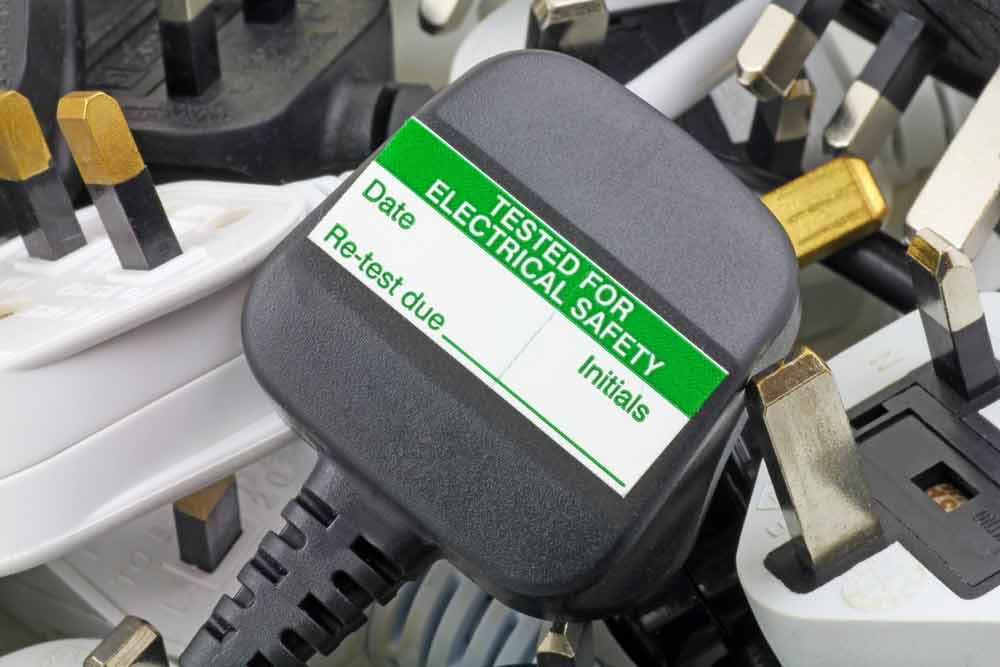O’Brien Electrical Camberwell offers a high-grade, competitively priced service for all your testing & tag needs in Camberwell and the surrounding region.
Our qualified, licensed, and experienced team is ready to assist with primary production operations (mining, agriculture etc), factories, offices, workshops, retail facilities, salons, pubs, clubs, care homes, hospitals, schools and anywhere else where electrical safety is viewed as a priority.
What is Test and Tag?
Testing and tagging is a two-part process of inspection and testing for portable electrical appliances. The testing part of the process involves both an inspection of the appliance and an electrical test.
To test the appliance, a qualified electrician is required to perform a thorough visual inspection for signs of damage or deterioration. In the vast majority of cases, signs of an electrical fault or risk relating to the appliance (such as frayed or exposed wiring, a damaged switch or clogged vents) can be picked up visually.
The electrician will also carry out an electrical test using a portable appliance tester (PAT). This tests for:
- Lead polarity
- Any weaknesses in insulation
- Earthing (grounding)
If the visual inspection and PAT test show no abnormalities, the electrical appliance will be labelled (tagged) to show that it has been tested and is considered safe for use, provided it is used correctly. The tag displays the date the test was conducted, along with the name of the person who completed the test. The date on which the next test is due is also displayed.
If an appliance fails either the inspection or the test, it will need to be removed from service immediately. Depending on the nature of the fault, the appliance should be either repaired or replaced. If repaired, a subsequent PAT test will need to be completed successfully before the appliance can be put back into general circulation.
Which Appliances Require Testing And Tagging?
Any appliance that is more than 50V, has a flexible cable and removable plug is eligible for test and tag.
What Are The Advantages Of Testing And Tagging?
Some of the benefits of adopting a scheduled test and tag regime are:
- A safer workplace: Whilst in most industries it’s not mandatory for portable electrical equipment to be tested and tagged, it is mandatory to manage risk in the workplace, under health and safety legislation. Electrical equipment of any kind has the potential to create risk. Whilst testing and tagging don’t completely eliminate risk, it is a useful way of flagging up potential defects before they result in an unwanted incident.
- Fewer delays: If a piece of electrical equipment isn’t working properly, or shorts out, there is almost inevitably a delay whilst a replacement is sourced, or an alternative way of working devised. Being unable to rely on electrical appliances means your productivity could fall, impacting the service provided to customers and creating frustration and additional stress for your workforce.
- Managed maintenance: Building testing and tagging into your regular maintenance regime ensure nothing is overlooked. It also enables better cost management.
- Prolong the life of your appliances: A timely repair or service could mean an appliance remains in circulation for several more years. In most cases, it’s cheaper to PAT test and put right any faults than it is to replace appliances as they become inoperable.
- Greener working: PAT testing helps appliances stay in useful service. It reduces the risk that they’ll be prematurely retired and sent to landfill.


Is test and tag mandatory in Victoria?
Tag and test are mandatory in primary industries, such as mining, logging and agriculture, is mandatory. In most other industries, tag and test is recommended, but is not a mandatory requirement. However, in the event of an accident involving a faulty electrical appliance, the fact that it hasn’t been subjected to regular testing could be used as proof of negligence.
Which appliances require testing and tagging?
Any appliance over 50V with a flexible cable and a removable plug is eligible for PAT testing. This could be anything from a desk lamp to portable heaters, power tools, microwaves, fridges, washing machines, kettles and similar items.
Do used/secondhand appliances require special consideration when it comes to testing and tagging?
We recommend that every eligible electrical appliance that your business acquires should be PAT tested. This includes used items. Even if a used item you’ve acquired has an old PAT test label showing it’s been regularly maintained, it should still be tested by a qualified electrician that you know will do the job properly.
Is testing and tagging recommended in a non-commercial environment?
PAT testing is all about reducing risk. Particularly if you’ve inherited an appliance, or have an older appliance, PAT testing is a good way of reducing the risk of an unwanted electrical fire or electric shock. We recommend PAT testing for secondhand appliances or older appliances that may have deteriorated to a dangerous state over the years.
